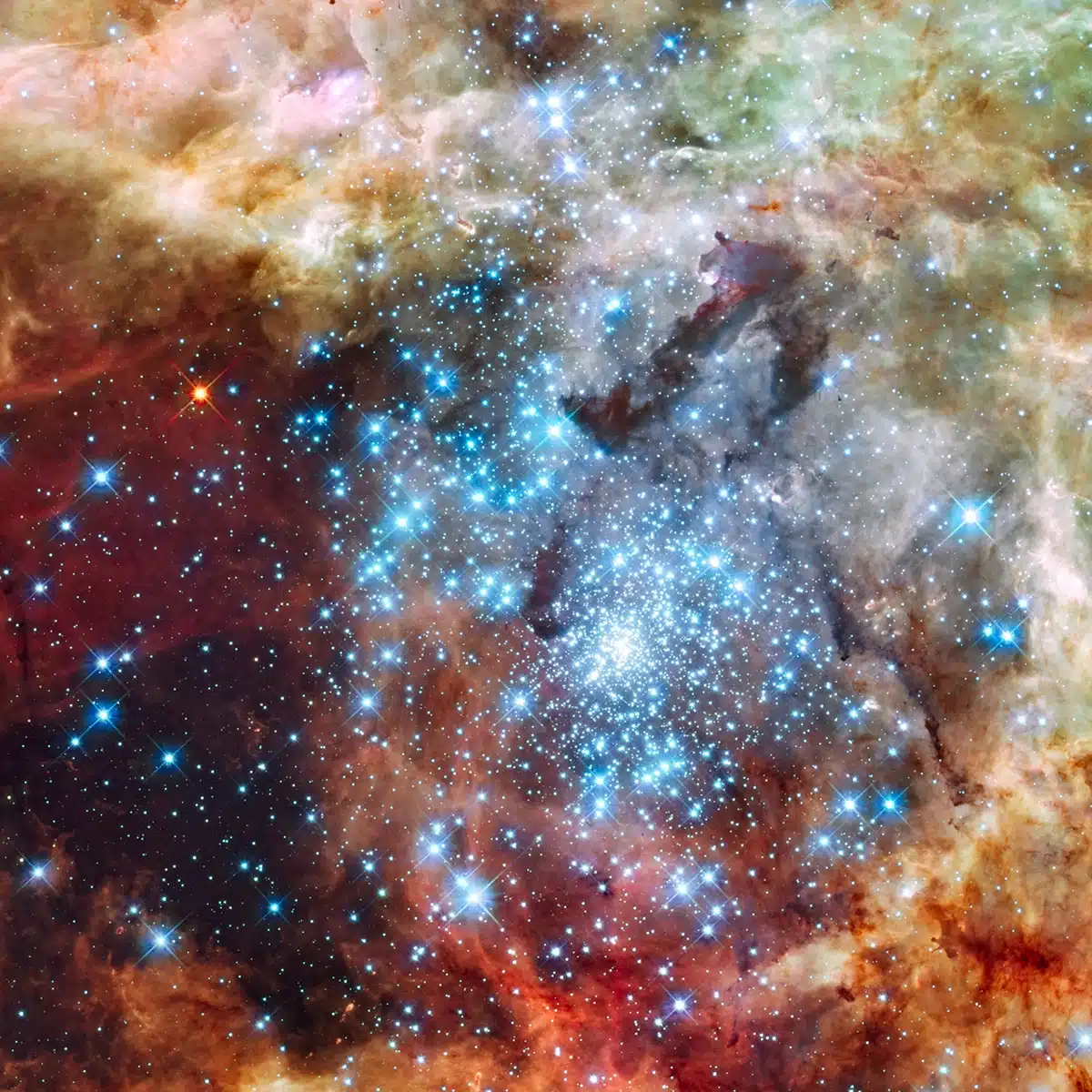Why in News?
- The team of astronomers studying the remnant discovered that it could not have been formed by a single supernova. Instead, the researchers believe it was created by at least two.
About 30 Doradus B
- 30 Doradus B, also cataloged as NGC 2060, is a supernova remnant found in the Large Magellanic Cloud, a small satellite galaxy of the Milky Way.
- It is part of a large star-forming region where stars have been continuously forming for the past 8 to 10 million years.
- It is a complex landscape of dark clouds of gas, young stars, high-energy shocks, and superheated gas, located 160,000 light-years away from Earth.
What is a Supernova?
- A supernova is the explosion of a star whose luminosity after an eruption suddenly increases many millions of times its normal level.
- Supernovas are “the largest explosion that takes place in space.”
- A star can go supernova in one of two ways:
- Type I supernova: The star accumulates matter from a nearby neighbour until a runaway nuclear reaction ignites.
- Type II supernova: The star runs out of nuclear fuel and collapses under its own gravity.
- Supernovas can briefly outshine entire galaxies and radiate more energy than our sun will in its entire lifetime.
- They’re also the primary source of heavy elements in the universe.
- They heat up the interstellar medium, distribute heavy elements throughout the Galaxy, and accelerate cosmic rays.
Key Facts about NASA’s Chandra X-ray Observatory
- It is a telescope specially designed to detect X-ray emission from very hot regions of the Universe, such as exploded stars, clusters of galaxies, and matter around black holes.
- It was launched by NASA on July 23, 1999.
- Because X-rays are absorbed by Earth’s atmosphere, Chandra must orbit above it, up to an altitude of 139,000 km (86,500 mi) in space.
Q1) What are X-rays?
X-rays are a form of electromagnetic radiation, similar to visible light. Unlike light, however, x-rays have higher energy and can pass through most objects, including the body. Medical x-rays are used to generate images of tissues and structures inside the body.
Source: Nasa telescope rings in 2024 by capturing two mega star explosions in space
Last updated on January, 2026
→ Check out the latest UPSC Syllabus 2026 here.
→ Join Vajiram & Ravi’s Interview Guidance Programme for expert help to crack your final UPSC stage.
→ UPSC Mains Result 2025 is now out.
→ UPSC Notification 2026 is scheduled to be released on January 14, 2026.
→ UPSC Calendar 2026 has been released.
→ UPSC Prelims 2026 will be conducted on 24th May, 2026 & UPSC Mains 2026 will be conducted on 21st August 2026.
→ The UPSC Selection Process is of 3 stages-Prelims, Mains and Interview.
→ Prepare effectively with Vajiram & Ravi’s UPSC Prelims Test Series 2026 featuring full-length mock tests, detailed solutions, and performance analysis.
→ Enroll in Vajiram & Ravi’s UPSC Mains Test Series 2026 for structured answer writing practice, expert evaluation, and exam-oriented feedback.
→ Join Vajiram & Ravi’s Best UPSC Mentorship Program for personalized guidance, strategy planning, and one-to-one support from experienced mentors.
→ UPSC Result 2024 is released with latest UPSC Marksheet 2024. Check Now!
→ UPSC Toppers List 2024 is released now. Shakti Dubey is UPSC AIR 1 2024 Topper.
→ Also check Best UPSC Coaching in India

















